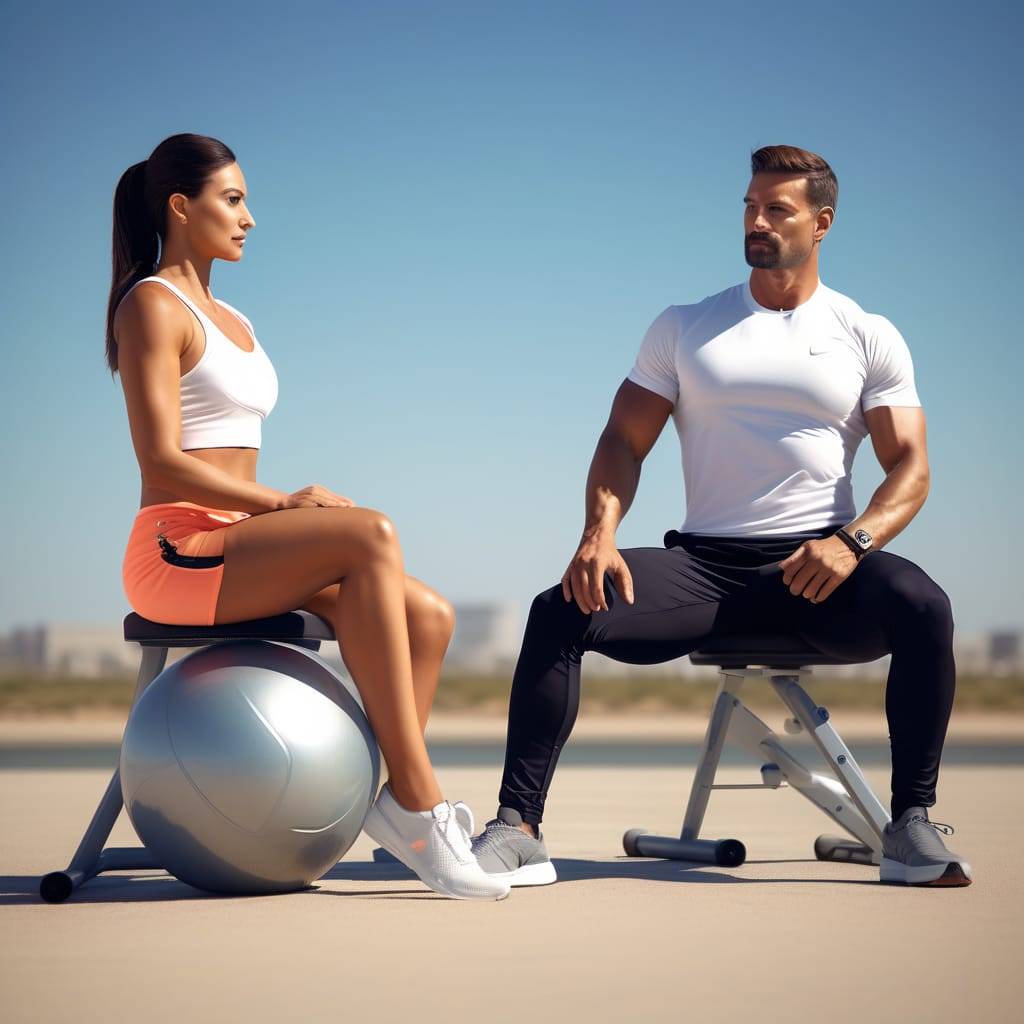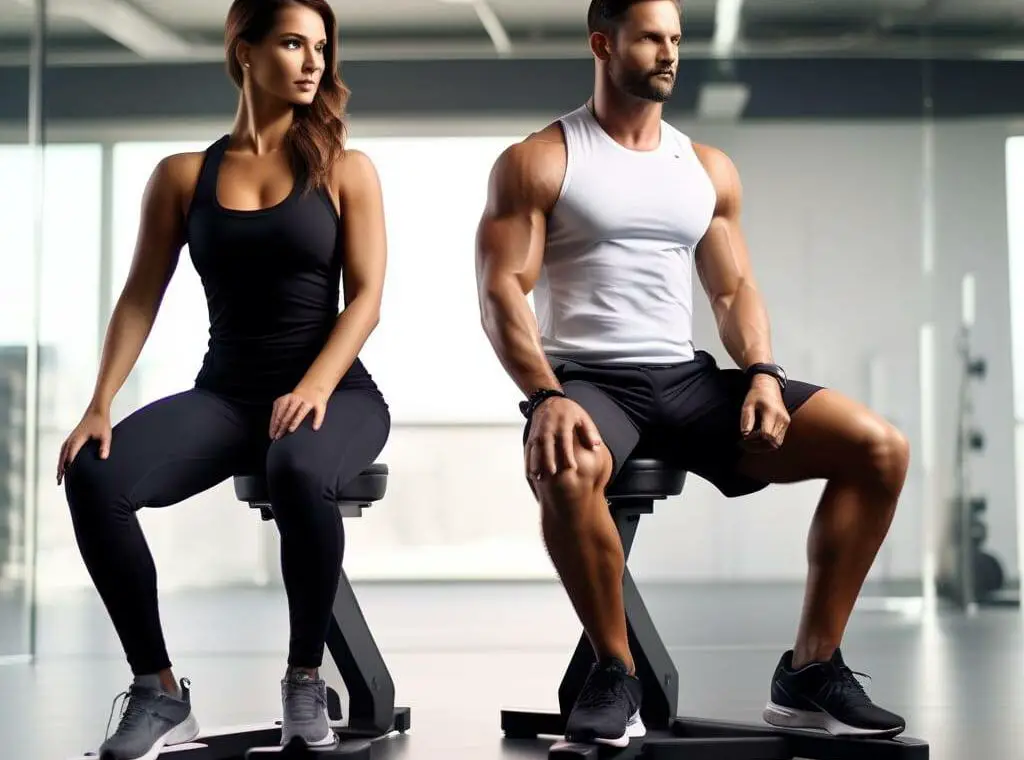Table of Contents
Introduction:

The adductor muscles, located on the inner thighs, play a crucial role in stabilizing the hip joint and supporting various movements such as walking, running, and lateral leg movements. Strengthening and maintaining flexibility in the adductors is essential for overall lower body strength and injury prevention. In this comprehensive guide, we will explore a variety of adductor exercises that target different aspects of these muscles.
Understanding the Adductors:
Before delving into specific exercises, it’s essential to understand the anatomy of the adductor muscles. The primary adductor muscles include the adductor longus, adductor brevis, adductor magnus, pectineus, and gracilis. These muscles work together to bring the thighs toward the midline of the body and contribute to stability during various lower-body movements.
Benefits of Adductor Exercises:
- Improved Stability: Strong adductors contribute to better hip stability, reducing the risk of injuries during dynamic movements.
- Enhanced Flexibility: Incorporating flexibility exercises helps maintain a healthy range of motion in the hip joint and prevents stiffness.
- Injury Prevention: Strengthening the adductors can help prevent common injuries such as groin strains and hip flexor issues.
- Better Athletic Performance: Athletes, in particular, can benefit from strong and flexible adductor muscles, improving performance in sports that involve lateral movements and changes in direction.
Now, let’s explore a variety of adductor exercises, categorized into strength and flexibility workouts:
Strength Exercises:
- Side-Lying Leg Lifts:
- Lie on your side with your bottom leg bent for stability.
- Lift the top leg towards the ceiling, engaging the inner thigh muscles.
- Lower the leg back down without letting it touch the ground.
- Perform 3 sets of 15 repetitions on each side.
- Seated Adductor Press:
- Sit on the floor with your legs extended in a V-shape.
- Place your hands on the floor for support and press your knees together.
- Hold for 10 seconds, then release.
- Repeat for 3 sets of 15 seconds.
- Adductor Squeeze with Stability Ball:
- Place a stability ball between your knees while lying on your back.
- Squeeze the ball with your knees, engaging the inner thigh muscles.
- Hold the squeeze for 5 seconds and release.
- Repeat for 3 sets of 20 repetitions.
- Sumo Squats:
- Stand with your feet wider than shoulder-width apart.
- Lower your body into a squat position, keeping your knees in line with your toes.
- Push through your heels to return to the starting position.
- Perform 3 sets of 12-15 repetitions.
Flexibility Exercises:
- Butterfly Stretch:
- Sit with your knees bent and the soles of your feet together.
- Hold your feet with your hands and gently press your knees toward the floor.
- Hold the stretch for 30 seconds, then release.
- Repeat 3 times.
- Adductor Stretch:
- Sit with your legs extended wide apart.
- Reach toward one foot, keeping your back straight.
- Hold the stretch for 20 seconds on each side.
- Repeat 3 times.
- Frog Stretch:
- Start on your hands and knees with your knees wider than hip-width apart.
- Slowly lower your hips toward the floor, feeling a stretch in your inner thighs.
- Hold for 30 seconds, then return to the starting position.
- Repeat 3 times.
- Lunging Adductor Stretch:
- Take a wide step to the side, lowering into a lunge on one side.
- Feel the stretch in the inner thigh of the extended leg.
- Hold for 20 seconds, then switch sides.
- Repeat for 3 sets on each side.
Conclusion:
Incorporating a combination of strength and flexibility exercises into your fitness routine is key to maintaining optimal adductor health. By targeting the adductor muscles from various angles, you can enhance their strength, flexibility, and overall functionality. Whether you’re an athlete looking to improve performance or someone aiming for better lower body stability, these exercises can be customized to suit your fitness level and goals. Always consult with a fitness professional or healthcare provider before starting a new exercise program, especially if you have any existing injuries or medical conditions. Remember, consistency is key, so make these adductor exercises a regular part of your workout routine for long-term benefits.
What is the primary function of the adductor muscles?
The adductor muscles are responsible for bringing the thighs towards the midline of the body. They play a crucial role in stabilizing the hip joint and supporting movements such as walking, running, and lateral leg movements.
Why is it important to strengthen the adductor muscles?
Strengthening the adductor muscles is vital for several reasons. Strong adductors contribute to better hip stability, reducing the risk of injuries during dynamic movements. Additionally, they enhance overall lower body strength, leading to improved athletic performance and a decreased likelihood of injuries such as groin strains.
Can adductor exercises help with flexibility?
Yes, incorporating specific adductor exercises into your routine can contribute to improved flexibility. Exercises like the butterfly stretch and lunging adductor stretch target the inner thighs, helping to maintain a healthy range of motion in the hip joint and preventing stiffness.
How often should I perform adductor exercises?
The frequency of adductor exercises depends on your fitness level, goals, and overall workout routine. However, a general recommendation is to perform adductor exercises 2-3 times per week. Consistency is key to seeing positive results, but it’s crucial to listen to your body and avoid overtraining.
Are there any precautions to consider when doing adductor exercises?
Before starting any new exercise program, especially those targeting specific muscle groups like the adductors, it’s advisable to consult with a fitness professional or healthcare provider. If you have any existing injuries or medical conditions, they can guide suitable exercises and modifications to prevent exacerbating any issues. Additionally, proper warm-up and gradual progression in intensity can help reduce the risk of injuries during adductor workouts.






